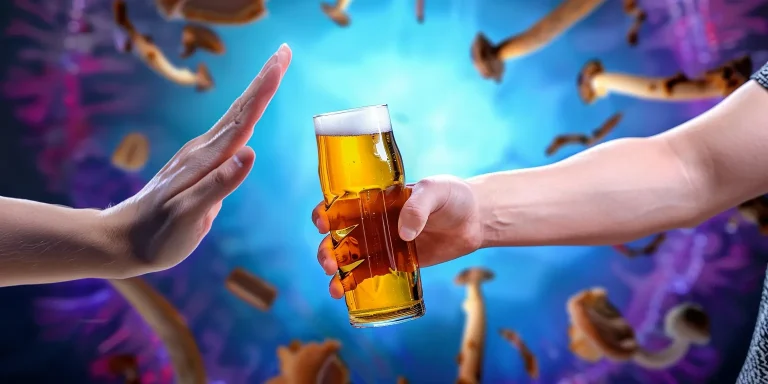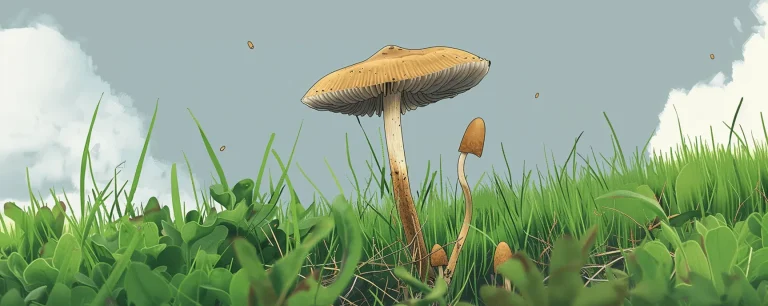In the summer of 2016, I had my first experience with psychedelics. On a sunny June day, two of my best friends and I huddled together to share a bag of dried, desiccated fungus. Right as we were about to chow down on the unappetizing-looking mushrooms, one of my friends stopped and wondered: “are mushrooms addictive?” This question has probably been asked about most classical psychedelics, which include DMT, LSD, and mescaline.
Fortunately, the science of psychedelics has come a long way in recent years. Psychedelic medicine, long stigmatized and often misunderstood, has seen a burst of resurgent interest from scientists and the general public. Policymakers from local to state and federal levels are beginning to change their tune as scientific consensus and public opinion veers away from the dark age of the War and Drugs and catches up with the “psychedelic renaissance.”
But what does the science actually say? Can you become physically or psychologically addicted to psychedelics? Do we need to be worried about a fresh wave of drug addiction riding on the back of psychedelic healing?
What Are Classical Psychedelics?
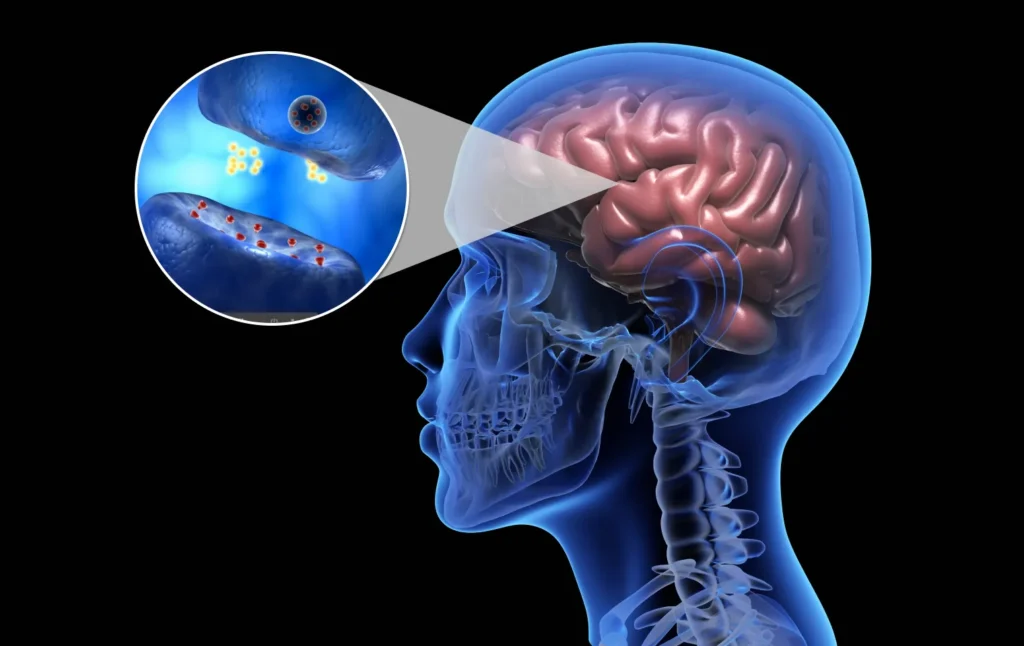
Classical psychedelics are a family of serotonergic (meaning they act on the serotonin system) hallucinogens and are agonists of the 5-HT (the chemical nickname for serotonin) receptors. This means they activate the serotonin receptor which then produces a downstream biological response. (1)
As mentioned above, the classical family of psychedelics includes naturally occurring chemicals like psilocybin (aka magic mushrooms), N,N-dimethyltryptamine (DMT), ayahuasca, and mescaline (the active drug found in the peyote cactus), as well as the synthetic drug Lysergic acid diethylamide (LSD). However, it should be noted that this does not include compounds like ketamine, which can be addictive when abused. (2)
Keep Up with Psychedelic Trends
Don’t miss the latest psychedelic news, events, companies, and more.
We respect and protect your privacy. By subscribing your info will be subject to our privacy policy. Unsubscribe easily at any time
Many of the effects of psychedelics are subjective. However, according to one study, they do share some common features like:(2)
- Visual and auditory hallucinations
- Elevated mood and euphoria
- Increased empathy
- Changes in cognition
- Mystical experiences
- Altered perception of time
- Introspective thinking
- A deeper sense of connection with the natural world
It should be noted that this study’s focus was on the long-term effects of psychedelics.
Generally speaking, these are some of the most common effects attributed to psychedelics. But it should be noted that the psychedelic experience will vary based on a number of factors. These can include age, weight, health, dosing, mental state, etc. You should always approach psychedelic use with a healthy amount of caution and education, so you have a safe, enjoyable experience.
Can the Use of Classical Psychedelics Cause Addiction?
Despite common misconceptions, research suggests that classic psychedelics may not be addictive.
This may be partly due to classical psychedelics being serotonergic drugs. As mentioned, this means that they act primarily on the serotonin system, whereas the addictive effects of drugs of abuse are primarily attributed to dopamine. Psychedelics act as agonists (meaning it activates a particular receptor) at different serotonin receptors in the brain. One animal study found very weak reinforcing effects of psilocybin.(3)
Reinforcing effects refer to the pleasurable sensations that encourage repeated drug use. The amount of reinforcement a drug produces is correlated with the drug’s potential for abuse. In a study about psilocybin, the active ingredient in magic mushrooms, researchers discovered that it doesn’t create strong desires for repeated use. This suggests that it has a low risk for causing addiction or dependence. The fact that psilocybin doesn’t have strong reinforcing effects means that users are less likely to keep taking it over and over again, which is something commonly seen in addictive behaviors.(4)
Keep Up with Psychedelic Trends
Don’t miss the latest psychedelic news, events, companies, and more.
We respect and protect your privacy. By subscribing your info will be subject to our privacy policy. Unsubscribe easily at any time
One non-systematic review of clinical trials utilizing classical and non-classical psychedelics as a treatment for substance use disorder found that psychedelics may actually help fight addiction. For example, researchers examined several clinical trials that used LSD to treat substance use disorder and found that LSD was associated with a decreased desire to consume alcohol and, in some cases, total cessation of alcohol consumption.(5)
Bill Wlson, the founder of Alcoholics Anonymous famously believed that LSD could be a useful tool in the fight against substance abuse. He theorized that the combination of LSD-induced visual hallucinations could, when combined with religious experiences, bring on a cessation in an individual’s desire to consume alcohol. However, his theories were never explored in any meaningful clinical or scientific research.
Another study theoretically suggests that the main reason LSD in particular is not taken on a daily basis may be due to the mental tolerance associated with it. Tolerance refers to the diminished response to a drug after repeated use, leading to the need for higher doses to achieve the same effect. Psychedelics may also build cross-tolerance to each other, such as LSD use building a tolerance to the effects of psilocybin.(6)
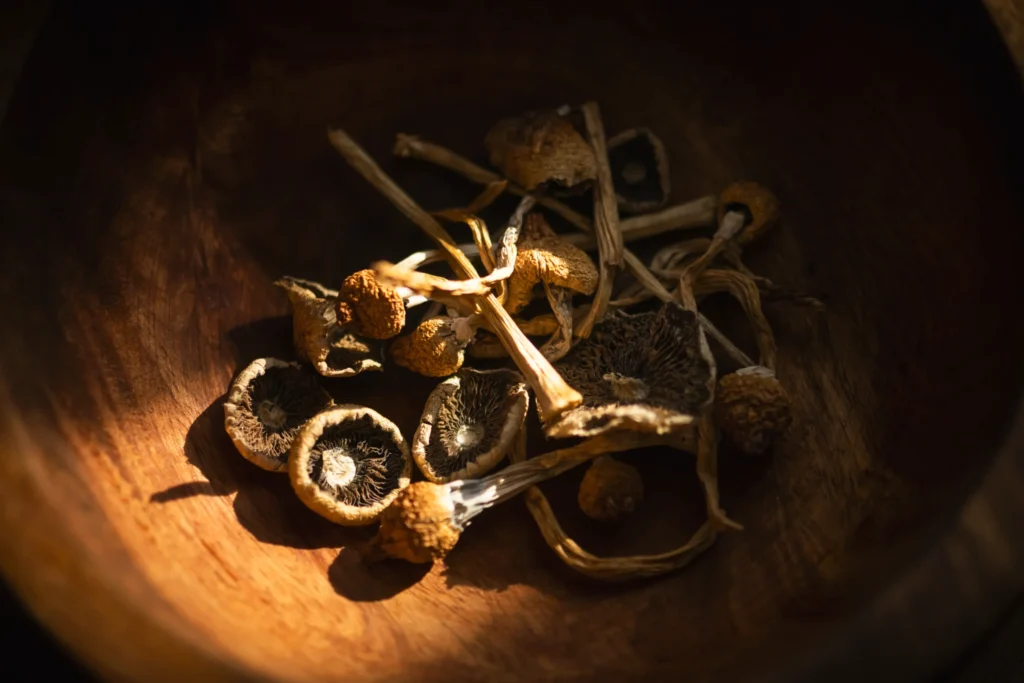
For example, the practice of microdosing, which involves taking frequent small doses of a psychedelic, requires rest days to reset tolerance. Without this reset microdosing practitioners would need to take increasingly high doses of a psychedelic like psilocybin to achieve the same results. Over time this would become burdensome, and impractical.
One animal study found that tolerance develops so quickly that daily dosing becomes impractical. For instance, to replicate the effects of a dose of LSD or psilocybin taken one day, twice the dose would need to be taken the following day. This rapid development of tolerance, combined with the unpredictable and often intense, nature of psychedelic experiences, makes these substances less likely to lead to dependence or addiction.(7)
Psychedelics and Mystical Experiences
Psychedelic use can be somewhat self-regulating. As mentioned above, this is partly due to the unpredictability and intensity of the experience, which can lead to some users self-imposing limits on the frequency of use or the dosage. Psychedelic journeys can be deeply introspective and emotionally intense. Anecdotally, some users often feel no desire to repeat the experience immediately.
“Although many of us think of psychedelics as dangerous drugs, it’s time for a rethink. They are non-toxic, non-addictive, have very few side effects, and could potentially offer relief for people suffering from a range of psychological difficulties.”
Additionally, psychedelics often take users on mystical or spiritual journeys they did not expect or intend. Some people could have a relatively relaxing or pleasurable time on a common dose of LSD, whereas others may have a significantly different trip. During these mystical experiences, someone who has taken a psychedelic, like psilocybin, may find themselves confronted with the “divine.” (8)

Typically, this type of event is deeply spiritual in nature and holds some sort of personal significance. Usually, people respond to a mystical event by feeling as if they’ve been given a mission or purpose to fulfill. Moreover, psychedelics tend to foster increased self-awareness and personal growth, which can lead to healthier lifestyle choices and reduced substance use overall.(8)
One randomized controlled trial utilizing ketamine infusions to treat cocaine-dependent individuals found that mystical experiences brought on by ketamine use were associated with a decrease in cocaine dependency. The researchers also observed a decrease in cocaine cravings following ketamine infusions.(8)
Psychedelics and The Role of Set and Setting
The festival also showcased promising mycomaterial prototypes like Reishi leather and mycelium bowls, hinting at the sustainable biomaterials potential mushrooms hold. Notably, the medical potential of psilocybin mushrooms was discussed in-depth by Dr. Gokul Raj, emphasizing a blend of traditional Indian wellness principles with modern psychedelic science.
To achieve the optimal set and setting, psychedelic users must undergo significant mental and emotional preparatory work. This usually includes establishing a goal, such as smoking cessation, or kicking an alcohol misuse problem. For some, setting an intention can go a long way to creating a mental construct where psychedelics are viewed as a type of medicine vs. a recreational drug.
A good example of how involved this process can be is from the Church of Mother Earth, an ayahuasca group. They detail a lengthy process that potential ayahuasca ceremony participants must undergo before taking what the church calls “the medicine.” The process requires the observation of a special diet, known as the “dieta,” physical and mental preparation, abstinence from sexual activities, and even a prohibition on the consumption of meat and alcohol for several weeks before the ayahuasca ritual.(10)
The intricate relationship between psychedelics and addiction reveals a complex yet promising landscape for therapeutic, medicinal, and self-introspective uses. Despite the absence of physical addiction, it remains critical to approach psychedelic use with respect, caution, and due diligence. These substances induce intense experiences that can be challenging to navigate, particularly without the right preparation, as well as set and setting. The rigorous processes of preparation and inteniont-setting exemplified by traditions like those of the Church of Mother Earth are stark reminders of this fact. As we journey further into the psychedelic resurgence, it’s crucial that education, harm reduction, and good science be the bedrock upon which further progress is built.
Sources

1. Serotonergic Psychedelic – an overview | ScienceDirect Topics. (n.d.). Www.sciencedirect.com. https://www.sciencedirect.com/topics/neuroscience/serotonergic-psychedelic
2. Knudsen, G. M. (2022). Sustained effects of single doses of classical psychedelics in humans. Neuropsychopharmacology, 1–6. https://doi.org/10.1038/s41386-022-01361-x
3. Canal, C. E., & Murnane, K. S. (2016). The serotonin 5-HT2C receptor and the non-addictive nature of classic hallucinogens. Journal of Psychopharmacology, 31(1), 127–143. https://doi.org/10.1177/0269881116677104
4. van Ree, J. M. (1979). Reinforcing stimulus properties of drugs. Neuropharmacology, 18(12), 963–969. https://doi.org/10.1016/0028-3908(79)90160-6
5. Buchborn, T., Grecksch, G., Dieterich, D. C., & Höllt, V. (2016, January 1). Chapter 79 – Tolerance to Lysergic Acid Diethylamide: Overview, Correlates, and Clinical Implications (V. R. Preedy, Ed.). ScienceDirect; Academic Press. https://www.sciencedirect.com/science/article/abs/pii/B9780128002124000790
6. Isbell, H., Wolbach, A. B., Wikler, A., & Miner, E. J. (1961). Cross tolerance between LSD and psilocybin. Psychopharmacologia, 2(3), 147–159. https://doi.org/10.1007/bf00407974
7. Gresch, P. J., Smith, R. L., Barrett, R. J., & Sanders-Bush, E. (2005). Behavioral Tolerance to Lysergic Acid Diethylamide is Associated with Reduced Serotonin-2A Receptor Signaling in Rat Cortex. Neuropsychopharmacology, 30(9), 1693–1702. https://doi.org/10.1038/sj.npp.1300711
8. Ko, K., Knight, G., Rucker, J. J., & Cleare, A. J. (2022). Psychedelics, Mystical Experience, and Therapeutic Efficacy: A Systematic Review. Frontiers in Psychiatry, 13. https://doi.org/10.3389/fpsyt.2022.917199
9. Hartogsohn, I. (2017). Constructing drug effects: A history of set and setting. Drug Science, Policy and Law, 3, 205032451668332. https://doi.org/10.1177/2050324516683325
10. Dieta Guide. (n.d.). Soul Quest Ayahuasca Church of Mother Earth. https://www.ayahuascachurches.org/dieta-guide/
This material is not intended as a replacement or substitute for any legal or medical advice. Always consult a medical professional about your health needs. Psychedelics are widely illegal in the United States, and readers should always be informed about local, state, and federal regulations regarding psychedelics or other drugs.
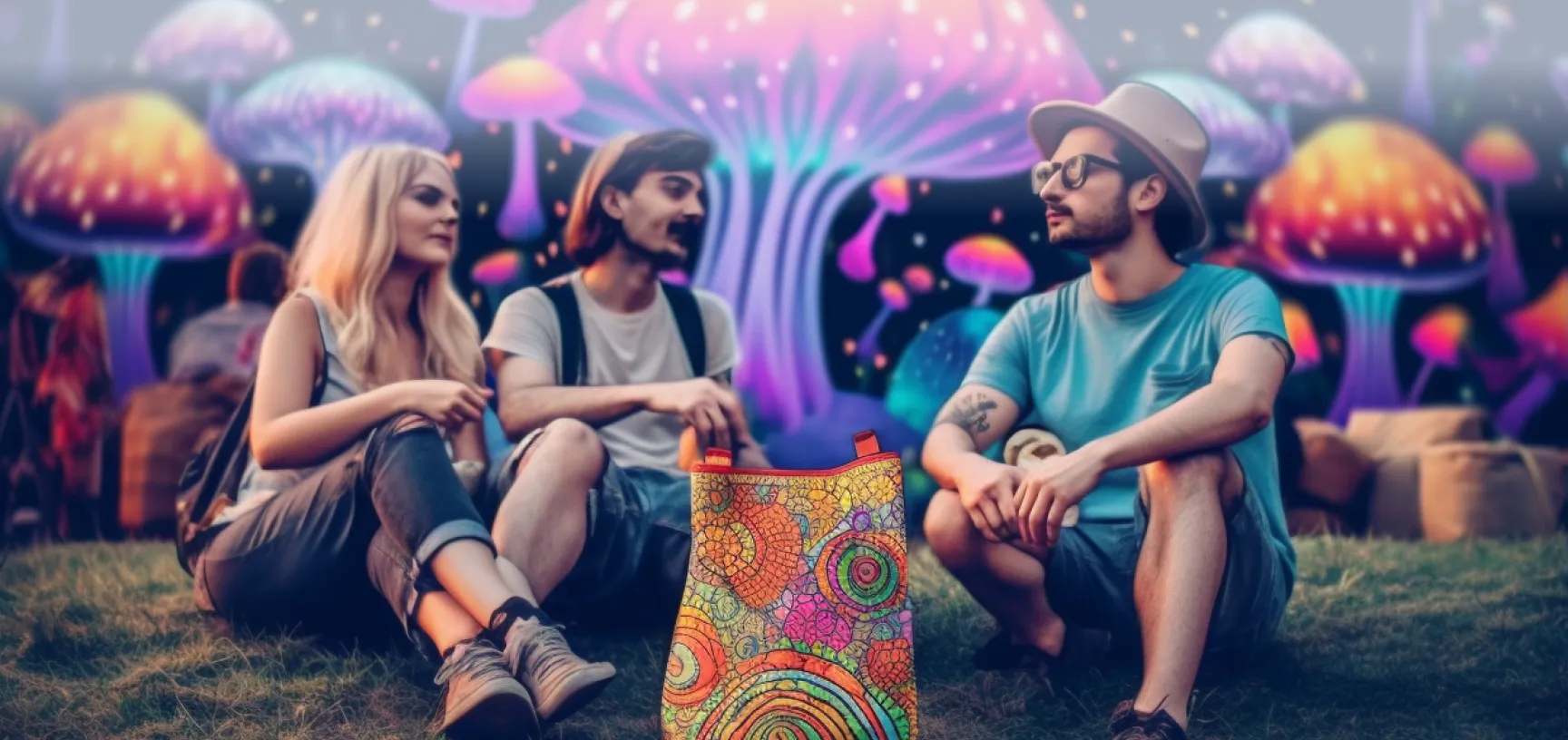
 David Connell
David Connell Paloma Lehfeldt, MD
Paloma Lehfeldt, MD